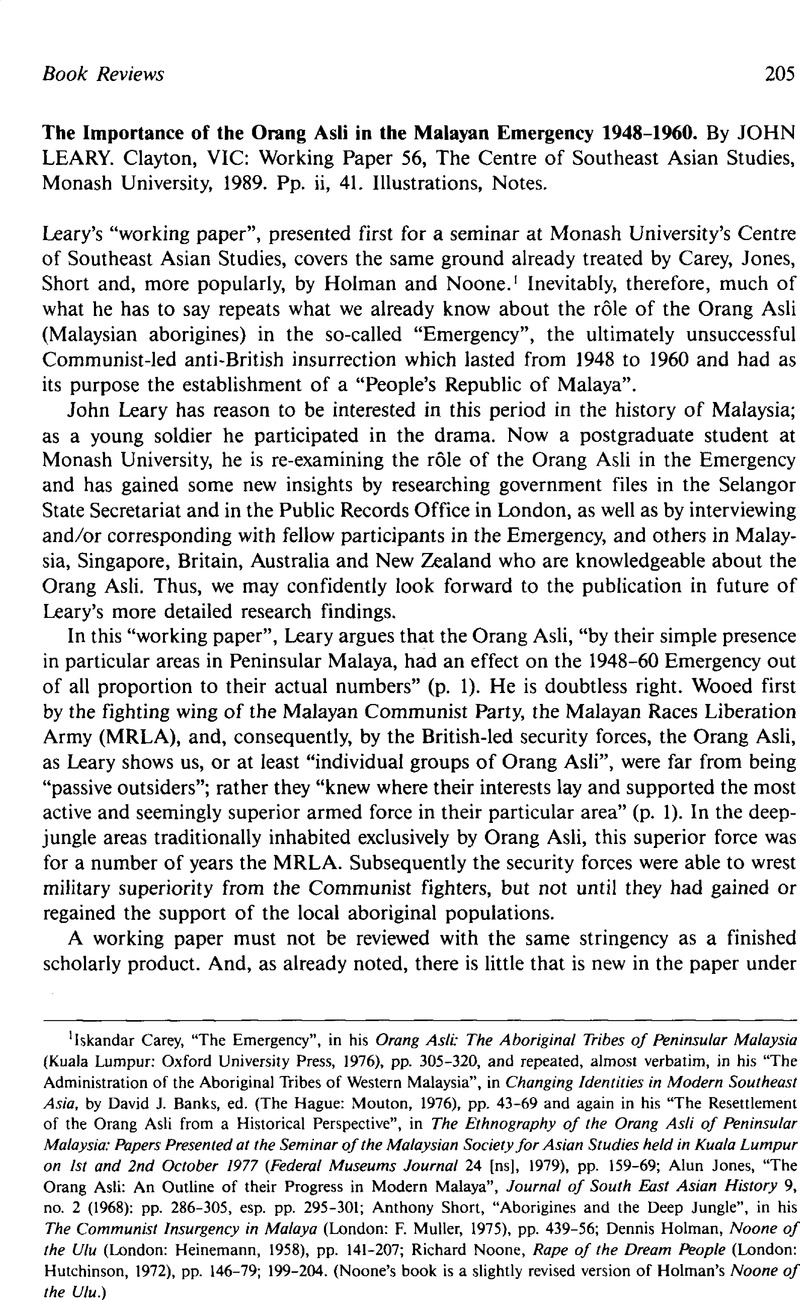No CrossRef data available.
Published online by Cambridge University Press: 24 August 2009

1 Carey, Iskandar, “The Emergency”, in his Orang Asli: The Aboriginal Tribes of Peninsular Malaysia (Kuala Lumpur: Oxford University Press, 1976), pp. 305–320Google Scholar, and repeated, almost verbatim, in his “The Administration of the Aboriginal Tribes of Western Malaysia”, in Changing Identities in Modern Southeast Asia, by Banks, David J., ed. (The Hague: Mouton, 1976), pp. 43–69CrossRefGoogle Scholar and again in his “The Resettlement of the Orang Asli from a Historical Perspective”, in The Ethnography of the Orang Asli of Peninsular Malaysia: Papers Presented at the Seminar of the Malaysian Society for Asian Studies held in Kuala Lumpur on 1st and 2nd October 1977 (Federal Museums Journal 24 [ns], 1979), pp. 159–69Google Scholar; Jones, Alun, “The Orang Asli: An Outline of their Progress in Modern Malaya”, Journal of South East Asian History 9, no. 2 (1968): pp. 286–305, esp. pp. 295–301CrossRefGoogle Scholar; Short, Anthony, “Aborigines and the Deep Jungle”, in his The Communist Insurgency in Malaya (London: F. Muller, 1975), pp. 439–56Google Scholar; Holman, Dennis, Noone of the Ulu (London: Heinemann, 1958), pp. 141–207Google Scholar; Noone, Richard, Rape of the Dream People (London: Hutchinson, 1972), pp. 146–79Google Scholar; 199–204. (Noone's book is a slightly revised version of Holman's Noone of the Ulu.)